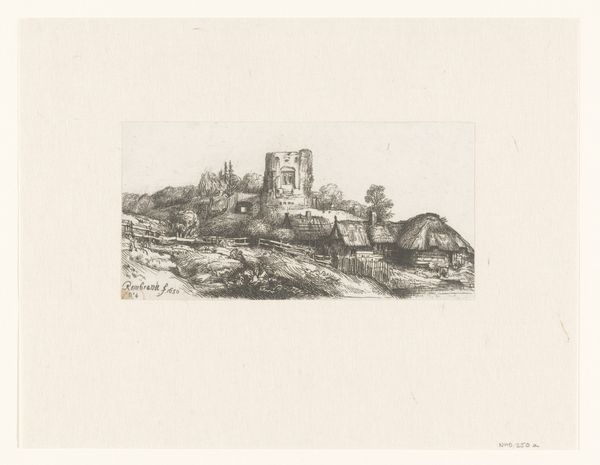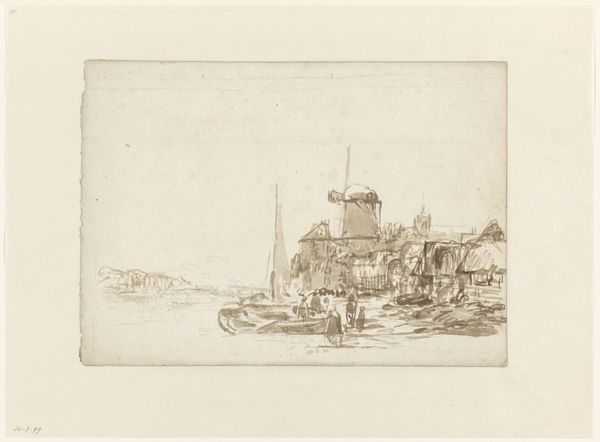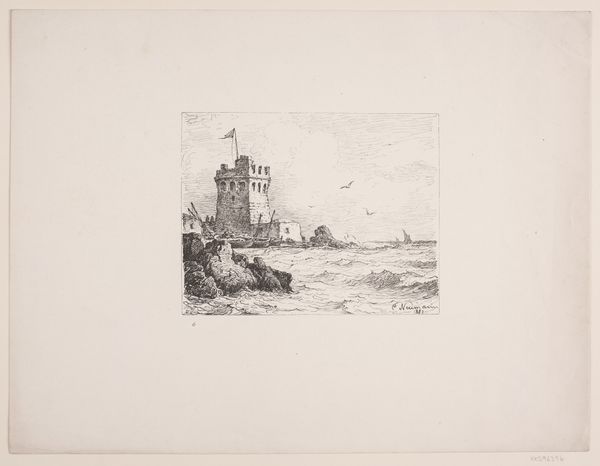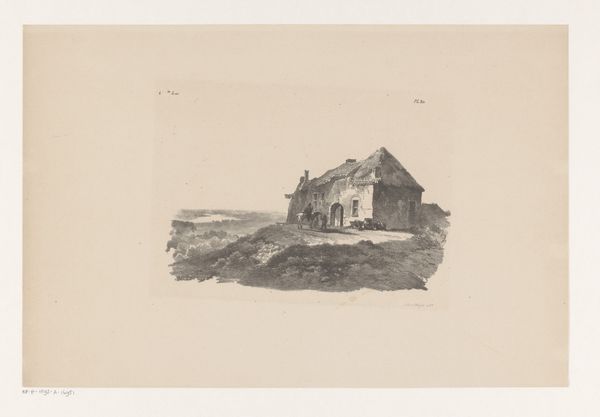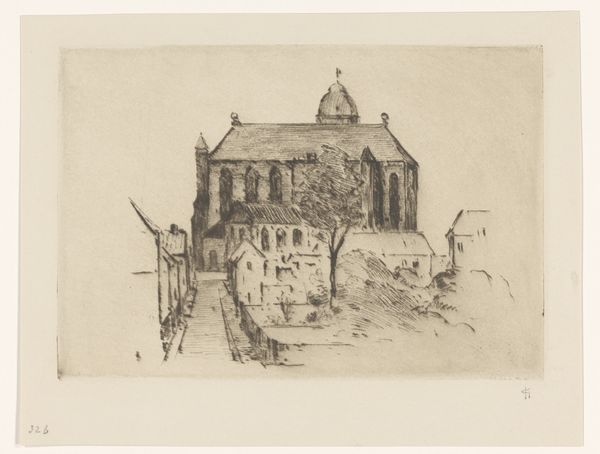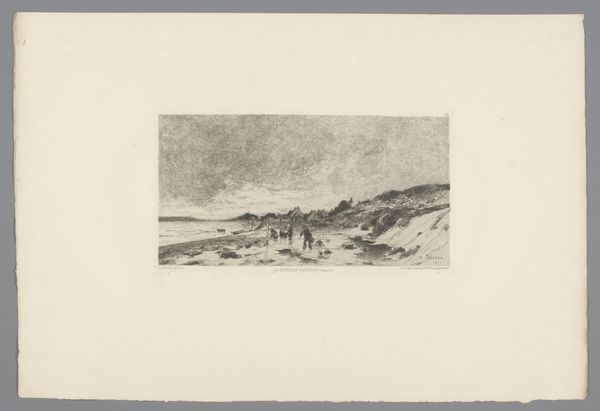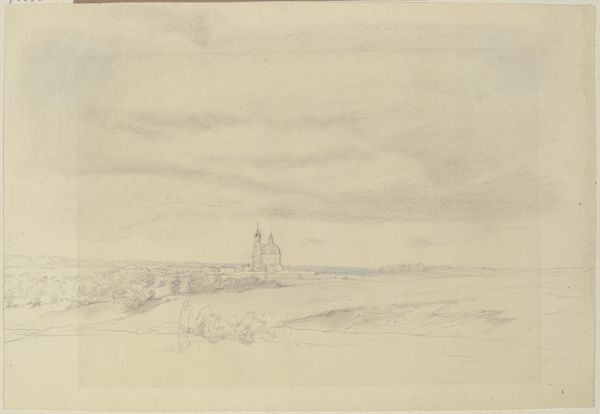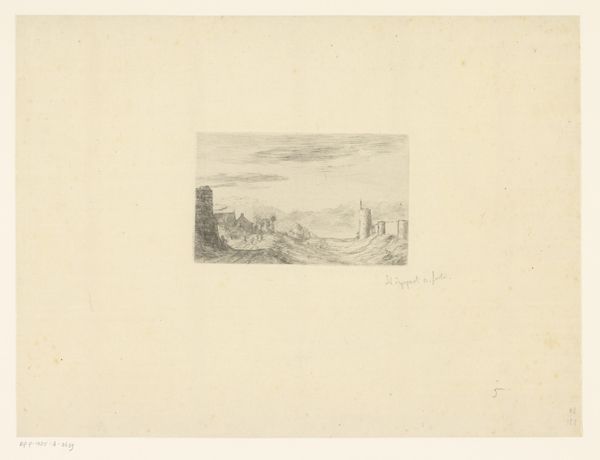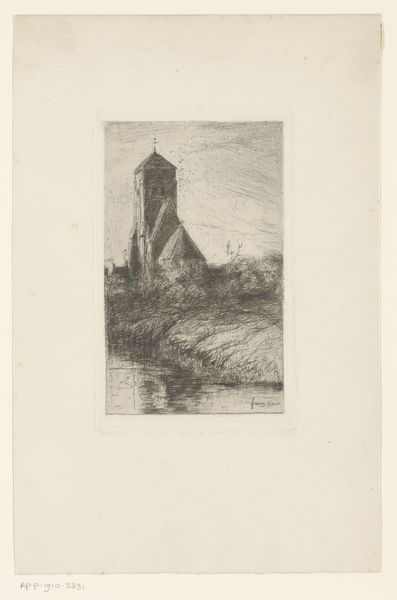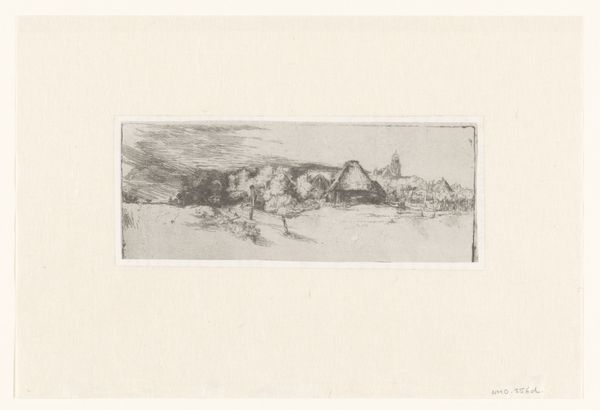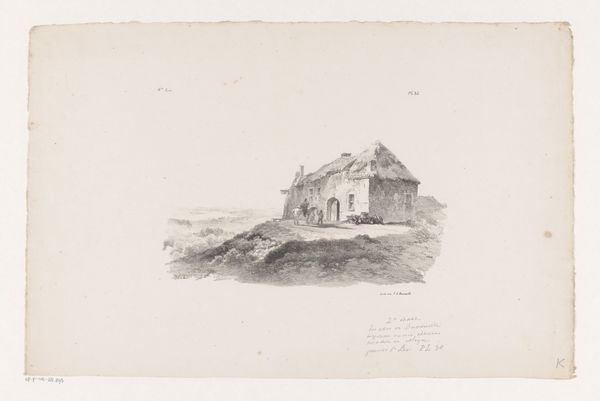
Gezicht op de Onze-Lieve-Vrouw-ter-Duinenkerk in Mariakerke 1876 - 1909
0:00
0:00
Dimensions: height 202 mm, width 276 mm
Copyright: Rijks Museum: Open Domain
Albert Baertsoen made this delicate view of the Onze-Lieve-Vrouw-ter-Duinenkerk in Mariakerke as an etching. This is an intaglio printmaking technique, meaning that the image is incised into a metal plate, likely copper, with acid. The plate is then inked, and the surface wiped clean, leaving ink only in the etched lines. The character of those lines gives the image its distinct feel. There’s a directness here; you can imagine Baertsoen working on the plate, guided by his sharp observation. The architecture and landscape, described with simple strokes, emphasize the church. The choice of etching emphasizes the importance of mark-making and skilled labor in creating the image. Etchings like this reflect a specific moment in the history of art when printmaking was gaining recognition as an art form, not merely a reproductive technique. Baertsoen, by embracing the handmade quality of etching, elevates the medium, inviting us to appreciate the artistry involved. This shifts our focus from just the image to the skilled work behind its production.
Comments
No comments
Be the first to comment and join the conversation on the ultimate creative platform.
